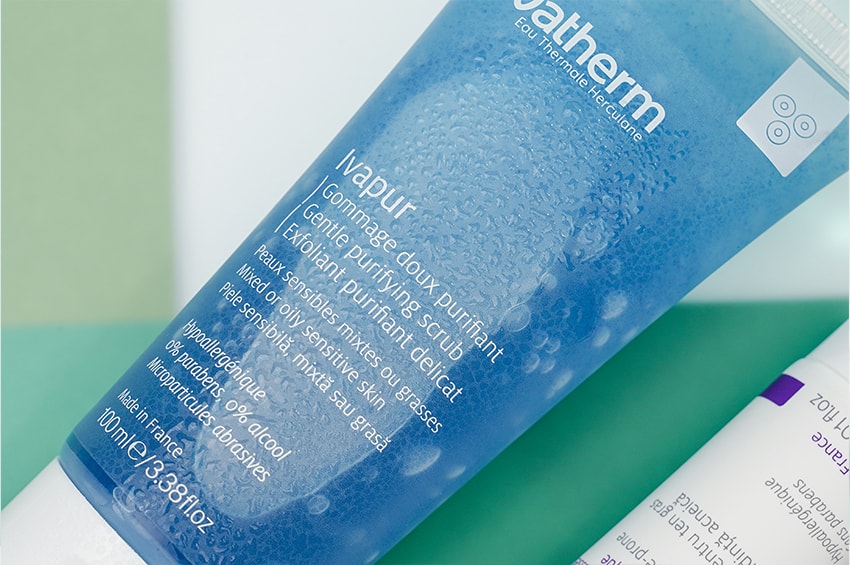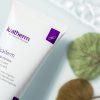Categories
Recent posts

What you need to know about acne
Treatment, symptoms, causes
Acne is the most unpleasant guest. It appears uninvited, at the most inopportune moment, it stays longer than necessary and leaves a disaster behind.
MD Rucsandra Hurezeanu tells you everything you need to know about acne, from causes to symptoms, prevention, types of acne and the right treatment.
What is acne
Acne is a condition of the skin that appears in the form of blackheads (comedones), whiteheads and, in severe cases, as inflammatory lesions such as: nodules, cysts, papules or pustules. Studies show that 85% of people have had this condition at some point. Acne occurs at any age, does not only affect adolescents, it can also occur during pregnancy or adulthood, mainly on the face, sometimes on the back of the head, on the neck, chest, shoulders or on the back.
Acne symptoms
Acne symptoms vary depending on the severity of the condition, divided into non-inflammatory and inflammatory.
Non-inflammatory acne lesions are:
- whiteheads or closed comedones, precursors of inflammatory lesions
- blackheads or open, painless comedones, known as the first stage of acne.
Inflammatory lesions are colonized by bacteria and take the form of: papules, pustules, cysts, painful nodules.
How inflammatory lesions manifest:
- papules or pimples – these occur when bacteria invade closed comedones and degrade sebum, triggering inflammation;
- pustules – occur when the inflammation is intense and fluid in the lesions or pus on the surface of the skin accumulates
- nodules are large, deep and painful swellings that can cause more than one follicle
- cysts are large, united, suppurating nodules. Cysts are the most common form of acne, these are painful and their manifestation is usually the result of a severe infection.
Severe acne lesions or those which are subject to excessive mechanical or chemical damage can result in the occurrence of scars.
Causes of acne
These inflammations of the skin, which we often call pimples, become visible when the pores are clogged with dead cells, hair follicles are clogged with sebum due to excess production and the number of bacteria, such as Cutibacterium acnes (formerly called Propionibacterium acnes), increases.
So, the main causes of acne are:
- Genetic predisposition
It is very possible that you have this problem if your parents have faced it. - Hormonal fluctuations
In adolescence, acne occurs more often in boys than in girls, but in adulthood it occurs more often in women. - Excess sebum
Mixed skin and oily skin favour acne, being the optimal environment for its occurrence. In Romania, the percentage of people with combination or oily skin is very high, acne being the most common condition. - Accumulation of dead cells on the surface of the skin (abnormal keratinization)
The skin renewal cycle lasts about a month. If this natural exfoliation process is not done properly, dead cells or flakes on the skin that do not come off block the pores, the hair follicles become clogged with sebum and give the bacteria the “opportunity” to invade the pores. - Bacterial spread – the sebum from the pores is colonized by bacteria, causing inflammation
If inflammation is present deep in the skin, then severe forms of the condition, cysts or nodules occur.
Types of acne
Infant acne or baby acne
<1 year
At birth, the newborn fetus and the toddler up to the age of one year old is faced with hormonal changes that can lead to the occurrence of this condition. But this will disappear on its own, and it should not be a cause for concern.
Juvenile acne or acne at puberty
It can manifest in people from 12-14 years, with severe episodes at 18-20 years, being visible sometimes up to 25 years old.
At puberty, the production of androgen hormones increases, the adolescent’s skin begins to secrete sebum in unimaginable amounts and the context conducive to the appearance of acne is created.
In girls, the appearance of the epidermis may be damaged even more while trying to cover the pimples, if foundation is applied over inflammation, on a skin that fails to eliminate the sebum in a sufficient manner. At the same time, vigorous make-up removal worsens the condition of the skin
Acne in pregnancy
It occurs due to hormonal changes. The recommendation is to let it go away on its own and use a cleansing gel, not a treatment.
Mature acne or adult acne
It also starts due to hormonal changes around the age of 30-35. It is much more present on the lower part of the face in women, on the jaw and chin, in the form of white or black heads, but also on the neck, back or chest and on the back in men.
A person with combination or oily skin may develop acne at any time. If you had a severe form at puberty and acne went into remission, the condition may recur. The skin healed by nodulo-cystic acne is more prone to acne at maturity, as it is an irregular surface, difficult to clean.
The severity of acne
The severity of acne is assessed by the number and type of skin lesions and is divided into:
- Mild acne – whatever you do, sometimes a pimple appears
- Moderate acne – blackheads are numerous and some of them are inflamed
- Severe acne – papules, cysts, pustules, nodules, inflammatory forms that require drug treatment. In this case, most of the time, the genetic factor is responsible.
Risk factors
What are the risk factors that contribute to the development of acne?
- genetic predisposition
- hormonal disorders or changes
- hygiene and care ritual
- makeup in women, especially foundation and blush. We recommend you a makeup as light as possible, which should be removed very gently later.
- unhealthy eating can be an aggravating factor
Prevention
There is no safe way to avoid acne, but there are some tricks that can help you prevent it.
- use dermatocomestics recommended by dermatologists, specially created to combat this condition.
- clean the skin in the morning and in the evening with micellar lotion or purifying gel to balance the secretion of sebum, to reduce bacterial spread and reduce inflammation.
- make sure that your skin does not accumulate dead cells on the surface, using an extremely gentle exfoliant to help it, but not more often than once a week.
- use products designed to reduce skin inflammation.
- avoid stress as much as possible. When you are stressed, your body produces more cortisol, which will cause the sebaceous glands to produce even more sebum than normal.
- avoid constantly touching the face so as not to spread bacteria. Do not support your chin or cheeks in your hands, as you risk spreading bacteria from your hands to your face,
- avoid loading the skin with makeup
- do not try to remove blackheads or pimples, you will stimulate inflammation. In addition, healing will be done by scarring, leaving unwanted marks on the face.
Acne treatment
Treatment of acne in severe stages is done by means of medicines, but mild, moderate acne and especially prevention is done with dermatocosmetics.
Our approach is to offer you a range of products for a long-term care ritual.
Dermatocosmetic treatment
The Ivapur range of products is dedicated to acne-prone skin and contains products specially created for its needs.

What steps do you need to take in order to take care of an acne prone skin?
Depending on the severity of the condition:
- Skin cleansing
- Daily care
- Dermatocomestic treatment, complementary to drug treatment
1. Facial cleansing
Facial cleansing is an important step in the daily care ritual, especially if the skin is acne prone. What are the benefits? Balancing sebum secretion, reducing bacterial spread, avoiding the accumulation of dead cells on the skin surface by light exfoliation.
Here are some products you can use to clean your face:
Ivapur micellar lotion gently removes makeup and impurities, regulates sebum secretion, without drying the skin, having antibacterial action. It has a calming, anti-irritant effect and a light texture that gives a feeling of freshness.
Ivapur purifying cleansing gel is for a gentle cleansing with water, giving a feeling of freshness and comfort to combination or oily skin. It has antimicrobial, anti-inflammatory and seboregulatory action. It does not dry the skin, it can be used daily or 3 times a week.
Ivapur gentle purifying scrub is a gel scrub that removes impurities, gently exfoliates the layers of dead cells, without causing irritation and prepares the skin for the effective application of the care cream. We recommend its use once a week.
2. Daily care
Ivapur Mat mattifying cream, perfect for combination or oily skin. It is preferred by teenagers, who use it daily, for a long time, for the mattifying effect. The cream regulates excess sebum, has an anti-glare effect and moisturizes the skin from the inside out.
Ivapur K is a daily care cream with antibacterial activity, reducing the sebum, but also moisturizing. It can be used on the long term, once or twice a day. It has a texture much appreciated by both girls and boys, teenagers or adults. It is a cream indicated in daily care during and between medications for acne treatment.
Ivapur No imperfection. The localized anti-blemish concealer speeds up the healing of the pimple, has an antibacterial effect and reduces the chances of scarring. It is applied punctually, has no dye and can be used daily.
3. Dermatocosmetic treatment, complementary to drug treatment
Ivapur A.I. Akne-Syt. For the treatment of moderate acne, we created a product with an efficiency and action comparable to those of retinoids, but without their side effects. The key ingredient in Akne-syt cream is Sytenol, a natural plant extract that reduces inflammation and the risk of post-acne scarring. Apply once or twice a day, for a week or two.
Ivapur Hidra is recommended in the treatment of severe acne, in combination with drug treatment. The cream moisturizes dehydrated skin, aggressed by anti-acne treatments intensely and on the long-term. At the same time, it restores the hydrolipid barrier, having a calming effect.





